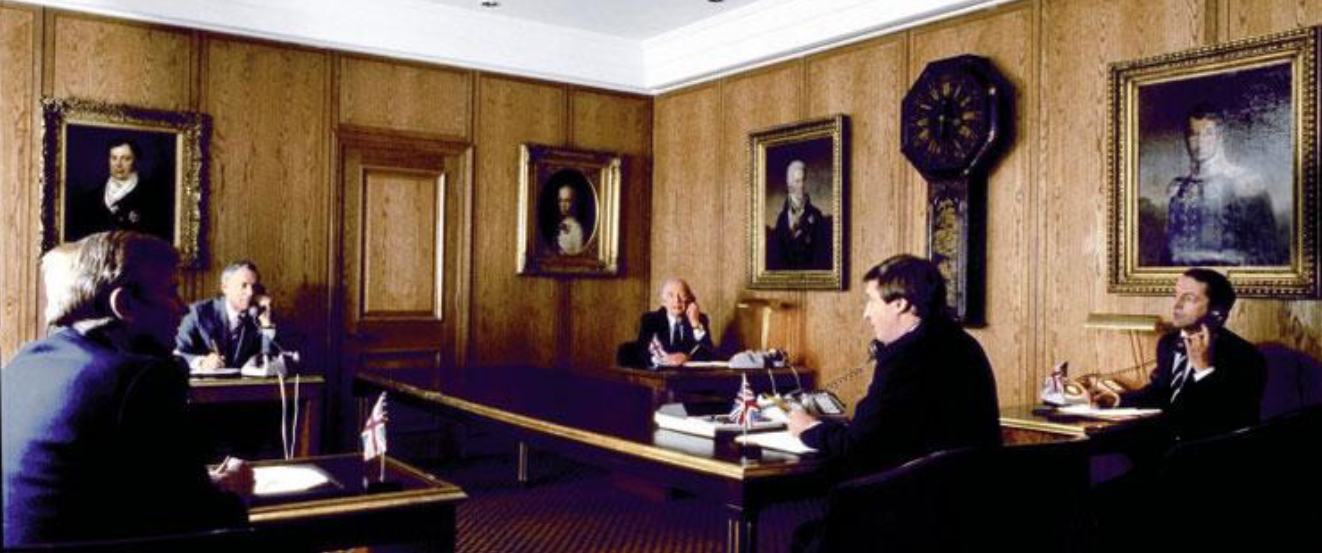The History Of The Gold Fix
 London Gold Fix
London Gold FixThe history of the gold fix uncovers a bizarre tradition. Ok, what's the Gold Fix then? Find Out Here.
When it comes to gold investment there's so much hype, after-all we are talking about one of the most precious metal under the sun. From gold market prices, investing in gold strategies, gold mining methods, market reports and endless demands from gold companies it can all be downright confusing. The hype bordering on hysteria around gold investment reminds me of the early gold rush days, everyone rushes for gold, but not necessarily in the right direction.
Yep, save the over-complicated mechanisms for standardizing the French Gold Fix please; you certainly won't be needing them for the London Gold Fix! Hallmark "fixing" on precious metals is another area of gold investment. A simple but expert guide to Hallmarking in Great Britain Can Be Found Here…
The History of the Gold Fix Began in 1919
Listen-up people. This is important! Without boring you with a whole lot of stuffy opulence, cut-to-the-chase, hype-free gold investment talk on the history of the gold fix goes like this:
In the year 1919, to kick-start London's gold market after the end of the First World War, five leading bullion dealers from London's five biggest bullion-banks met on that day to establish a centralized price of gold that all five dealers agreed upon.
They were charged by the London Gold market to agree on a price for the bullion on offer.
Before 12th September 1919 the gold prices fluctuated widely due to the lack of any standardized marketing mechanism.
For 85 years until 2004, (in 2004 NM Rothschild, one of the City's oldest merchant banks, decided that profit takes precedence over history and announced [see BBC News reference] its intentions to withdraw from London's gold market), the five-member banks of the London gold Fix would meet face-to-face at the offices of N.M. Rothschild, erstwhile chairperson of the Gold Fix, on St. Swithins Lane, in London.
Rothschild has been the center of the world's financial markets for over 200 years.
Representatives, of the five dealers, would sit at a long table with each having a small Union Jack flag on a stand in front of them. Some of the five were looking to buy gold while others were looking to sell. The chairperson, (Rothschild until 2004) would recommend a gold price at which the buyers and sellers would transact business.
If a seller was willing to sell his gold at the recommended price, they would lower their flag.
If a gold buyer was willing to buy gold at the recommended price, he would lower his flag. If one or both were not willing to deal at the recommended price, some or all of the flags would stay up and the chairman would suggest another gold price up or down. A representative of these five companies meets twice a day on the phone with the chairman suggesting a gold price and phone participants, both buyers and gold sellers, saying - "flag" when they are satisfied with the recommended gold price.
Robert James, in characteristic style, suggests (on the ISG Forums Board) that the conversation between the five representatives could have gone something like this:
"You want to buy at this gold price? Nope? How about this price? Yep? OK, Done deal. Let's go have a pint."
Although the telephone has replaced the twice a day meetings in the past couple of years, the bizarre tradition of the history of the gold fix still lives on and has changed little since 1919. That's one ncredible history!
References:
International School of Gemology
Return to the top of History of the Gold Fix
Return to Invest in Gold
Return to Antique Jewelry Investor Home Page
